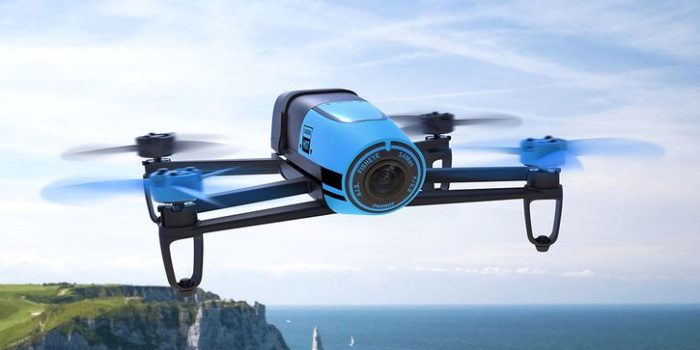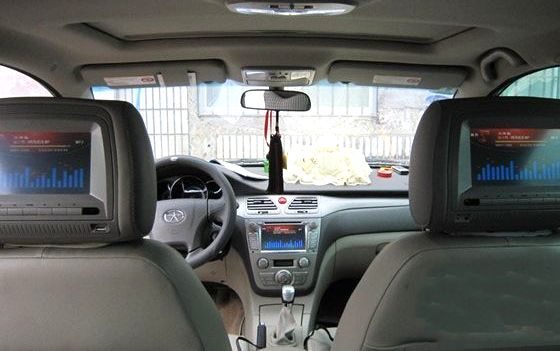Drones, or Unmanned Aerial Vehicles (UAVs), to use the more technically favoured term, first hit the headlines as a military application, but commercial and consumer categories of ‘small drones’ have now come to prominence. Models targeted at consumers are now frequently seen on store shelves, and a significant ‘enthusiast’ following is now driving drone “first-person view” or FPV racing into sports media coverage. The website arstechnica.com reports that drone races are coming to ESPN thanks to “unprecedented” popularity, and the 2016 US National Drone Racing Championships will be the first event streamed live.

The UAV market is now dominated by a handful of key players, such as DJI (Shenzhen, China), Parrot SA (France), 3D Robotics Inc. (US), and PrecisionHawk (US). (The accompanying photo is of a UAV in Parrot’s Bebop series.)
According to a report by Grand View Research, Inc., the global commercial drone market is expected to be worth US$2.07 billion by 2022. “Increased utility in law enforcement and agricultural applications is expected to play a pivotal role in market growth over the forecast period.”
While UAVs can come in an enormously wide variety of shapes and sizes, the report notes that rotary-blade drones accounted for over 75% of the market in 2014. Typically in a quadcopter (4-blade) format, this type of design has the added advantage of being able to hover in a fixed position. This capability could be particularly useful in aerial imaging (both still and video), and in making air-to-ground deliveries.
According to the Grand View report, North America contributed over 55% of global drone revenue in 2014. The Asia Pacific, however, will see a high proliferation of commercial UAVs over the forecast period. Countries such as Japan and Australia have emphasised the use of UAVs in agriculture.
90 million consumer UAVs to ship in 2025
According to ABI Research, more than 90 million consumer UAVs will ship during 2025, up from 4.9 million in 2014, for a CAGR of 30.4% over the same period. Consumer drone revenues in 2025 are forecast to reach US$4.6 billion.
According to ABI’s research findings, toy-hobbyist UAV shipments accounted for 30% of consumer UAV revenue in 2014, while the “prosumer” segment captured 69%. ABI Research anticipates that toy-hobbyist UAV revenue will surpass prosumer UAV revenue in 2017 and will account for more than two-thirds of the US$4.6 billion consumer market in 2025.
All business: Commercial drones
According to Business Insider, the global commercial drone market will be based in particular around applications in agriculture, energy, utilities, mining, construction, real estate, news media, and film production.
Business Insider also notes that most growth in the drone industry is now in the commercial-civilian segment, rather than military. Business Insider projects that the market for commercial-civilian drones will grow at a CAGR of 19% between 2015 and 2020, compared with 5% growth on the military side.
Interestingly, Business Insider expects that e-commerce and package delivery will not be an early focus of the drone industry – despite the much-publicised interest of online retailer Amazon in drone delivery systems. And, “Legacy drone manufacturers focused mostly on military clients do not have a natural advantage in the fast-evolving civilian drone market.”
Small drones, big growth
According to a report from Markets and Markets, the global small drones market is projected to grow from US$5.8 billion in 2015 to US$10.04 billion by 2020, for a CAGR of 11.6%.
The increasing demand for commercial applications is expected to drive the growth of the small drones market during the forecast period, 2015 to 2020. Advances in payload technology over the past decade have led to an increased use of small drones for a variety of operations and tasks, notes the report, in the defence as well as the commercial sector.
China: The great drone take-off
According to Dronelife.com, China currently boasts more than 400 drone manufacturers. Research firm CBInsights reports that investment in the global drone sector was nearly US$500 million in 2015, but more than a quarter of the total funding amount went to DJI in series B funding and Yuneec in venture capital funding – both China companies.
According to ZDNet, Chinese exports of consumer and commercial drones increased ninefold in 2015. Customs data indicates that total drone exports in 2015 were valued at 2.7 billion yuan, or more than US$413 million. Concludes ZDNet, China now controls nearly 70% of the world market in this sector.
DJI of Shenzhen is generally acknowledged to be China’s civilian drone star, currently. According to Yu Dawei, DJI reported sales of about US$500,000 in 2010, and that figure climbed to US$129 million in 2013. The company claims to have supplied 70% of the world’s civilian drones in 2015, and sales revenue for the year 2015 has been widely reported – by Forbes, for example – at around US$1 billion.
Links:
https://www.abiresearch.com/press/consumer-drone-shipments-exceed-90-million-units-a/
http://www.businessinsider.com/uav-or-commercial-drone-market-forecast-2015-2
http://www.marketsandmarkets.com/PressReleases/commercial-drones.asp
http://dronelife.com/2016/01/14/will-china-dominate-the-drone-market/
https://www.cbinsights.com/blog/drone-funding-2015/
http://www.zdnet.com/article/export-of-chinese-made-drones-increases/
Photo: Parrot Bebop Drone






